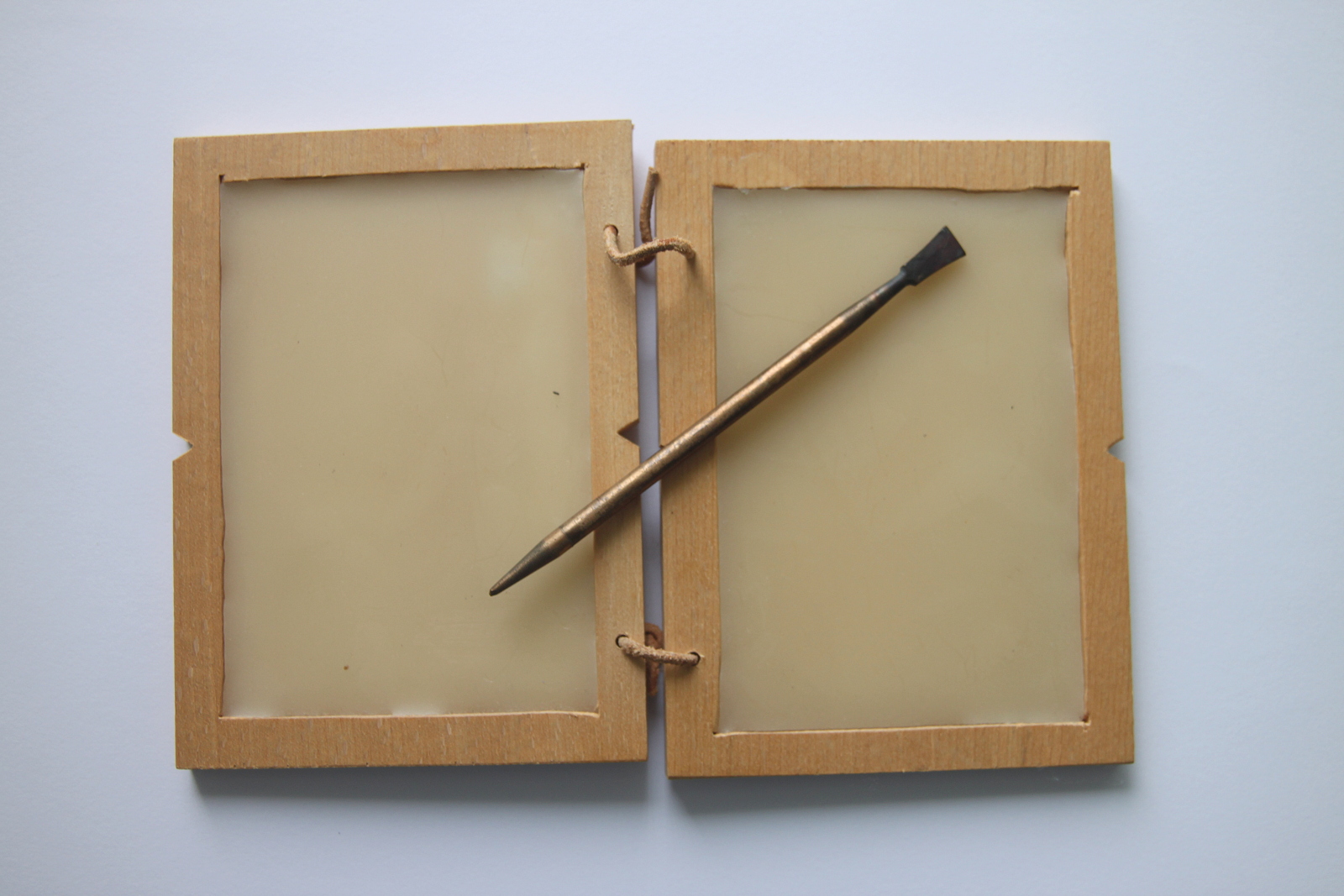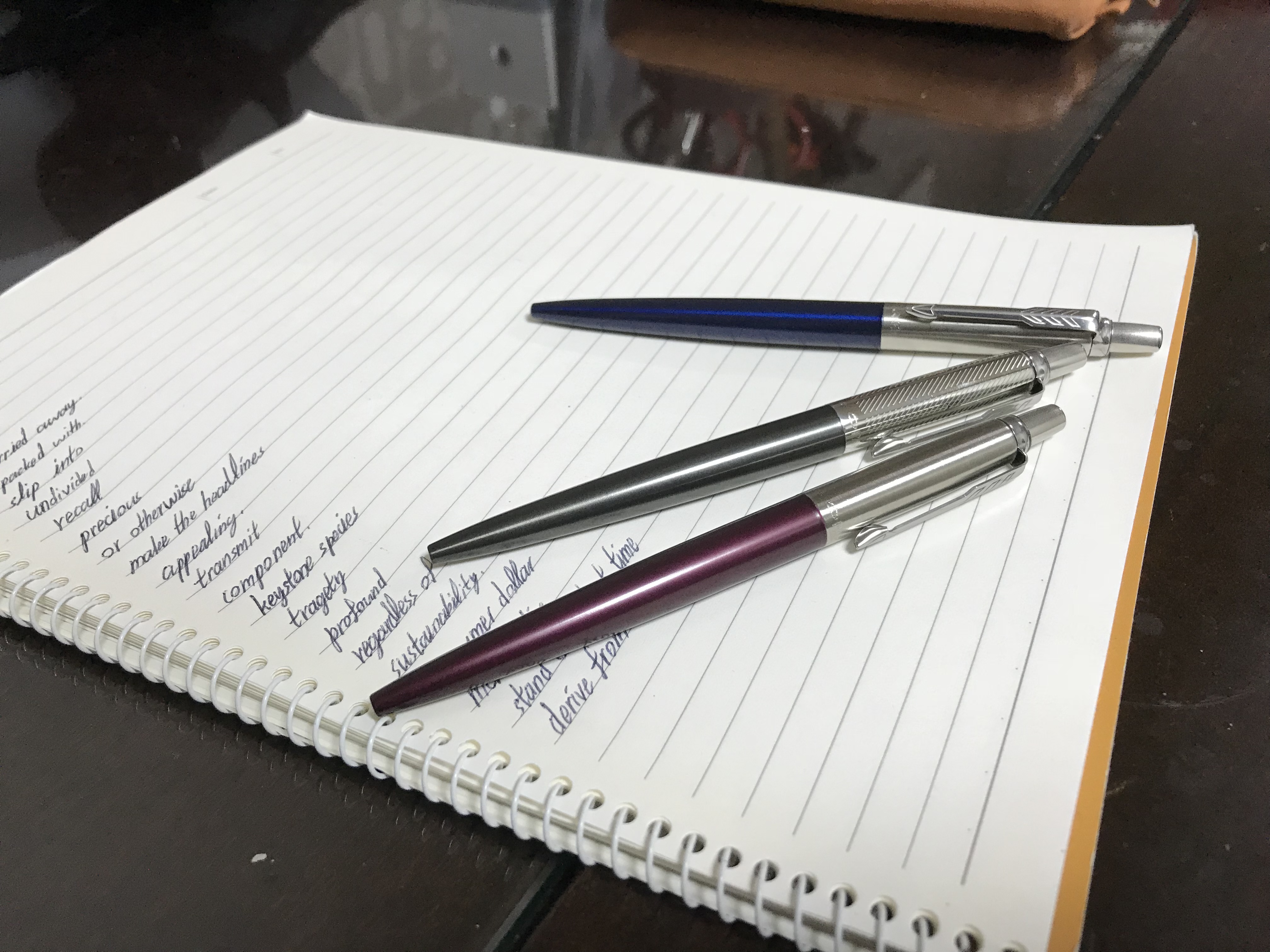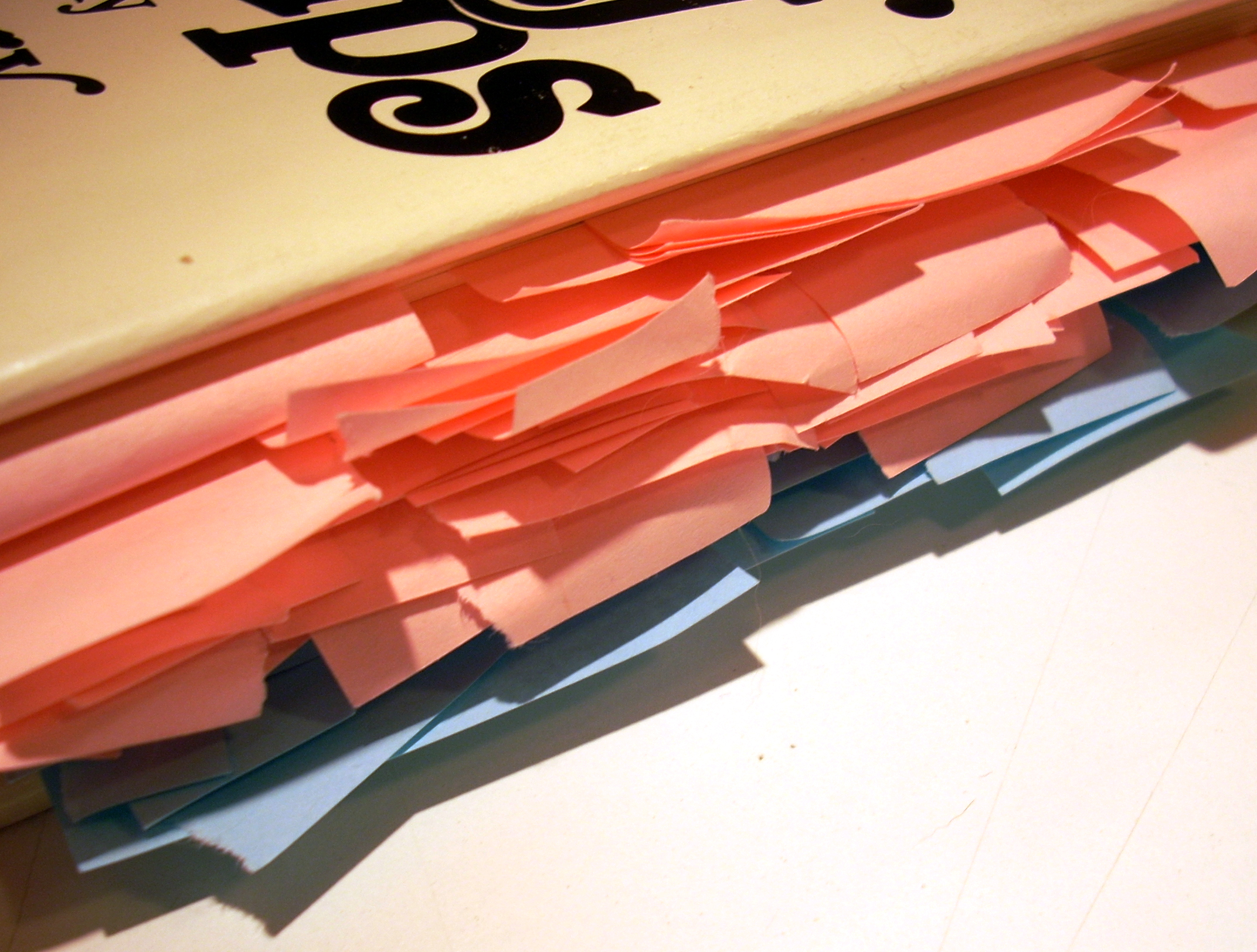|
Dry Transfer
Dry transfers (also called rub-ons or rubdowns) are decals that can be applied without the use of water or other solvent. The decal itself is on a backing material such as paper or plastic sheeting much like a transparency. The dry transfer is placed in the desired location with the backing side up. The decal is then applied by burnishing the backing with a stylus or similar object such as a ballpoint pen. The contact side of the decal includes a pressure-sensitive adhesive; the combination of heat and pressure causes the decal to stick more strongly to the new surface than to the backing. When the backing is removed, the decal remains. This allows for ink only where needed even if the pattern is delicate, because the backing supports the decal while it is being applied. Dry transfers are used in manual technical drawing when standard graphic elements such as title blocks, forms, patterned lines, shading, piping or electronic schematic symbols need to be repetitively used. Use ... [...More Info...] [...Related Items...] OR: [Wikipedia] [Google] [Baidu] |
Decal
A decal (, , ) or transfer is a plastic, cloth, paper, or ceramic substrate that has printed on it a pattern or image that can be moved to another surface upon contact, usually with the aid of heat or water. The word is short for '' decalcomania'', a decorative technique by which engravings and prints are transferred to pottery or other materials. The technique was invented by Simon François Ravenet (1706-1774), an engraver from France who later moved to England and perfected the process he called "décalquer" (which means "to copy by tracing"); it became widespread during the decal craze or mania of the late 19th century. Properties The term "decal" refers to the mass-produced art transfer in two different states: 1. As manufactured, which consists of the artwork printed on the upper side of a paper or film label stock, temporarily affixed by a typically water or heat soluble adhesive to the upper side of a silicone- or other release agent-coated paper or film backing ... [...More Info...] [...Related Items...] OR: [Wikipedia] [Google] [Baidu] |
Solvent
A solvent (from the Latin language, Latin ''wikt:solvo#Latin, solvō'', "loosen, untie, solve") is a substance that dissolves a solute, resulting in a Solution (chemistry), solution. A solvent is usually a liquid but can also be a solid, a gas, or a supercritical fluid. Water is a solvent for Chemical polarity#Polarity of molecules, polar molecules, and the most common solvent used by living things; all the ions and proteins in a Cell (biology), cell are dissolved in water within the cell. Major uses of solvents are in paints, paint removers, inks, and dry cleaning. Specific uses for Organic compound, organic solvents are in dry cleaning (e.g. tetrachloroethylene); as paint thinners (toluene, turpentine); as nail polish removers and solvents of glue (acetone, methyl acetate, ethyl acetate); in spot removers (hexane, petrol ether); in detergents (D-limonene, citrus terpenes); and in perfumes (ethanol). Solvents find various applications in chemical, pharmaceutical, oil, and gas ... [...More Info...] [...Related Items...] OR: [Wikipedia] [Google] [Baidu] |
Transparency (projection)
A transparency, also known variously as a viewfoil or foil (from the French word "feuille" or sheet), or viewgraph, is a thin sheet of transparent flexible material, typically polyester (historically cellulose acetate), onto which figures can be drawn. These are then placed on an overhead projector for display to an audience. Many companies and small organizations use a system of projectors and transparencies in meetings and other groupings of people, though this system is being largely replaced by video projectors and interactive whiteboards. Printing Transparencies can be printed using a variety of technologies. In the 1960s and 70s the GAF OZALID "projecto-viewfoil" used a diazo process to make a clear sheet framed in cardboard and protected by a rice paper cover. In the 1980's laser printers or copiers could make foil sheets using standard xerographic processes. Specialist transparencies are available for use with laser printers that are better able to handle the high te ... [...More Info...] [...Related Items...] OR: [Wikipedia] [Google] [Baidu] |
Burnishing (metal)
Burnishing is the deformation (engineering), plastic deformation of a surface due to friction, sliding contact with another object. It smooths the surface and makes it shinier. Burnishing may occur on any sliding surface if the contact stress locally exceeds the yield (engineering), yield strength of the material. The phenomenon can occur both unintentionally as a failure mode, and intentionally as part of a metalworking or manufacturing process. It is a squeezing operation under cold working. Failure mode (unintentionally) The action of a hardened ball against a softer, flat plate illustrates the process of burnishing. If the ball is pushed directly into the plate, stresses develop in both objects around the area where they contact. As this normal force increases, both the ball and the plate's surfaces deform. The deformation caused by the hardened ball increases with the magnitude of the force pressing against it. If the force on it is small, when the force is released both ... [...More Info...] [...Related Items...] OR: [Wikipedia] [Google] [Baidu] |
Stylus
A stylus is a writing utensil or tool for scribing or marking into softer materials. Different styluses were used to write in cuneiform by pressing into wet clay, and to scribe or carve into a wax tablet. Very hard styluses are also used to Engraving, engrave metal, and the slate and stylus system is used to punch out dots to write in Braille. Styluses are held in the hand and thus are usually a narrow elongated shape, similar to a modern ballpoint pen. Many styluses are heavily curved to be held more easily. The word ''stylus'' is also used to describe Stylus (computing), computer styluses used to assist in navigating or providing more precision when using touchscreens. Etymology ''Stylus'' comes from the Latin —the spelling ''stylus'' arose from an erroneous connection with Greek (), 'pillar'.''Oxford Latin Dictionary'', s.v. "stilus" (2012). The Latin word had several meanings, including "a long, sharply pointed piece of metal; the stem of a plant; a pointed instrume ... [...More Info...] [...Related Items...] OR: [Wikipedia] [Google] [Baidu] |
Ballpoint Pen
A ballpoint pen, also known as a biro (British English), ball pen (Hong Kong, Indian, Indonesian, Pakistani, and Philippine English), or dot pen ( Nepali English and South Asian English), is a pen that dispenses ink (usually in paste form) over a metal ball at its point, i.e., over a "ball point". The metals commonly used are steel, brass, or tungsten carbide. The design was conceived and developed as a cleaner and more reliable alternative to dip pens and fountain pens, and it is now the world's most-used writing instrument; millions are manufactured and sold daily. It has influenced art and graphic design and spawned an artwork genre. History Origins The concept of using a "ball point" within a writing instrument to apply ink to paper has existed since the late 19th century. In these inventions, the ink was placed in a thin tube whose end was blocked by a tiny ball, held so that it could not slip into the tube or fall out of the pen. The first patent for a ballpoi ... [...More Info...] [...Related Items...] OR: [Wikipedia] [Google] [Baidu] |
Pressure-sensitive Adhesive
Pressure-sensitive adhesive (PSA, self-adhesive, self-stick adhesive) is a type of nonreactive adhesive which forms a bond when pressure is applied to bond the adhesive with a surface. No solvent, water, or heat is needed to activate the adhesive. It is used in pressure-sensitive tapes, labels, glue dots, stickers, sticky note pads, automobile trim, and a wide variety of other products. As the name "pressure-sensitive" indicates, the degree of bond is influenced by the amount of pressure which is used to apply the adhesive to the surface. Surface factors such as smoothness, surface energy, removal of contaminants, etc. are also important to proper bonding. PSAs are usually designed to form a bond and hold properly at room temperatures. PSAs typically reduce or lose their tack at low temperatures and reduce their shear holding ability at high temperatures; special adhesives are made to function at high or low temperatures. Structural and pressure-sensitive adhesives Adhesives m ... [...More Info...] [...Related Items...] OR: [Wikipedia] [Google] [Baidu] |
Technical Drawing
Technical drawing, drafting or drawing, is the act and discipline of composing drawings that visually communicate how something functions or is constructed. Technical drawing is essential for communicating ideas in industry and engineering. To make the drawings easier to understand, people use familiar symbols, perspectives, units of measurement, notation systems, visual styles, and page layout. Together, such conventions constitute a visual language and help to ensure that the drawing is unambiguous and relatively easy to understand. Many of the symbols and principles of technical drawing are codified in an international standard called ISO 128. The need for precise communication in the preparation of a functional document distinguishes technical drawing from the expressive drawing of the visual arts. Artistic drawings are subjectively interpreted; their meanings are multiply determined. Technical drawings are understood to have one intended meaning. A draftsman is ... [...More Info...] [...Related Items...] OR: [Wikipedia] [Google] [Baidu] |
Letraset
Letraset was a company known mainly for manufacturing sheets of typefaces and other artwork elements using the dry-transfer lettering method. Letraset was acquired by the Colart group and became part of its subsidiary Winsor & Newton. Corporate history Letraset was founded in London, England, in 1959, with the launch of the Letraset Type Lettering System. In 1961, Letraset came out with their dry transfer lettering system, which pioneered the technique. Starting in 1964, Letraset also applied the dry rub-down transfer technique to create a children's arts and crafts toy called Action Transfers, which would later develop into Kalkitos (marketed by Gillette), and many other series of transferable figures that were very popular up to the 1980s. Letraset was acquired by the Swedish stationery company Esselte until 2000, when it was sold to a management buyout headed up by Martin Gibbs and Michael Travers. Eventually sold to ColArt in 2012. Seeing a decline in the sale ... [...More Info...] [...Related Items...] OR: [Wikipedia] [Google] [Baidu] |
Action Transfers
Action Transfers, also known as rub-on transfers, were an art-based children's pastime that was extremely popular throughout the world from the 1960s to the 1980s. They consisted of a printed cardboard background image and a transparent sheet of coloured dry transfer figures of people, animals, vehicles, weapons, explosions and so on. These transfers were supposed to be applied to the background scene by rubbing the top surface of the transparent sheet with a hard object or stylus; typically, this would mean a ball-point pen or a pencil; the figure would thereby be transferred from its sheet to the background. Since it was not customary to determine exactly where the transfers should be applied, surreal or comic effects could be achieved—whether deliberately or inadvertently—by juxtaposing the transfers and the background inappropriately. It was also possible to apply the transfer figures elsewhere than on the supplied background, and conversely it is quite common to come across ... [...More Info...] [...Related Items...] OR: [Wikipedia] [Google] [Baidu] |
Appliqué
Appliqué is ornamental needlework in which pieces or patches of fabric in different shapes and patterns are sewn or stuck onto a larger piece to form a picture or pattern. It is commonly used as decoration, especially on garments. The technique is accomplished either by hand stitching or machine. Appliqué is commonly practised with textiles, but the term may be applied to similar techniques used on different materials. In the context of ceramics, for example, an appliqué is a separate piece of clay added to the primary work, generally for the purpose of decoration. The term originates from the Latin ''applicō'' "I apply" and subsequently from the French language, French ''appliquer'' "attach". History The term appliqué is derived from French and Latin verbs ''appliquer'' and ''applicare'', respectively, which both mean to join or attach. Like embroidery, it has a humble beginning. The technique was used as a way to strengthen worn areas of items or to patch holes that had ... [...More Info...] [...Related Items...] OR: [Wikipedia] [Google] [Baidu] |







